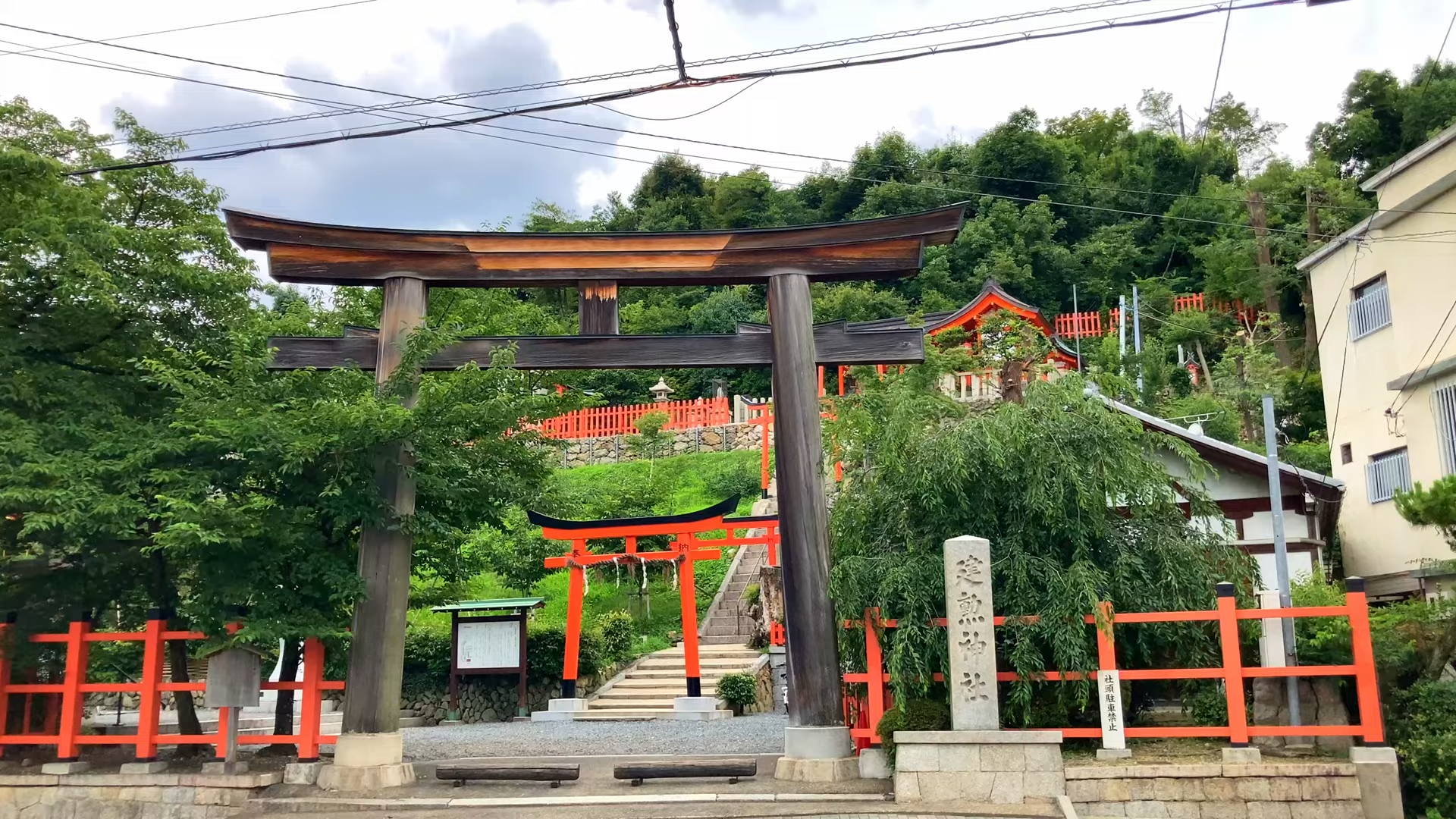Kenkun Shrine is a hidden gem, a place where Kyoto’s history and nature come alive. This shrine is located a short distance away from the hustle and bustle of Kyoto City, yet offers visitors a peaceful time and space.
In this issue, we will introduce its charm and how to access the shrine!
Table of Contents
What is Kenkun Shrine?
Kenkun Shrine is one of the relatively unknown shrines in Kyoto, dedicated to a man who was active during the tumultuous period at the end of the Edo period. This shrine is a special place for Kyoto history buffs and those who wish to visit a quiet, sacred place.
Kenkun Shrine Features
- Deep history: The shrine enshrines a hero of the late Edo period and is deeply rooted in Kyoto’s history.
- Quiet atmosphere: A place where one can enjoy a moment of peace and tranquility away from the hustle and bustle of the city.
- Beautiful garden: The seasonal flowers are beautiful and fascinating to visit.
- Cultural tre asures: Historic buildings and cultural treasures to explore.
Highlights
Architecture and Meritorious Vassals
The main hall and the worship hall of Kenkun Shrine were built in the early Meiji period (1868-1912), and are designated as Tangible Cultural Properties of Japan. Inside the hall of worship, there are paintings of distinguished vassals who distinguished themselves under Nobunaga, such as Hideyoshi Hashiba, Katsuie Shibata, and Toshiie Maeda. is a must-see spot for history buffs.
Swords and red seals
Kenkun Shrine is also known as a shrine associated with swords, with red seals and charms associated with “Yoshimoto Left Character (Sosan Left Character)” and “Yakken Fujishiro (reproduction of a sword),” a short sword said to have been a favorite of Oda Nobunaga. This is a particularly good spot for sword enthusiasts.
Spectacular view
Located at the top of Funaoka-yama, the temple grounds offer a panoramic view of the city of Kyoto, Mount Hiei, and Mount Daimonji. It is also known as a great viewing point during the Gozan Okuribi (Bonfire of the Five Mountains).
Main events
- Funaoka Grand Festival: Held on October 19, the Funaoka Grand Festival features the dedication of the Atsumori Dance and Bugaku (dance and music) associated with Lord Nobunaga, as well as the display of treasures related to Lord Nobunaga and live firing of firearms, depending on the year.
- Natsukoshi-Oharai Ceremony: Visitors go through a straw ring to pray for good health and good fortune.
What are popular souvenirs?
Popular souvenirs around Kenkun Shrine include traditional crafts unique to Kyoto and shrine original good luck charms, which are perfect souvenirs to commemorate your visit.
How to get there
Access to Kenkun Shrine is very convenient from Kyoto City by public transportation.
If using a train, take the municipal subway from Kyoto Station, get off at Kokusaikaikaikan Station, then transfer to a city bus and get off in front of Kenkun Shrine.
It is also possible to take a bus directly from Kyoto City. A convenient route is to take a city bus from Kyoto Station and get off in front of Ken kun Shrine, but it is important to check the latest bus schedule in advance as bus service varies depending on the season.
Access by bicycle or on foot is also recommended if you are staying in Kyoto City, especially on a nice day when you can enjoy a stroll to Kenkun Shrine while enjoying the beautiful cityscape of Kyoto. However, public transportation is recommended due to limited parking in the vicinity of the shrine.
Recommended Time to Visit
Kenkun-jinja Shrine is beautiful in all four seasons, but is especially special during the cherry blossom season in spring and the autumn foliage season in fall!
Tips for enjoying Kenkun Shrine more
- Visit early in the morning: In the quiet of the morning, you can appreciate the beauty and serenity of the shrine more deeply.
- Participate in seasonal events: You can get a taste of local culture by attending seasonal festivals and events.
Conclusion
Kenkun Shrine in Kyoto is a special place where you can enjoy history and natural beauty at the same time. Kenkun Shrine is one of the must-visit spots when visiting Kyoto, where you can enjoy the seasonal changes and think about the history of the heroes at the end of the Tokugawa Shogunate!



